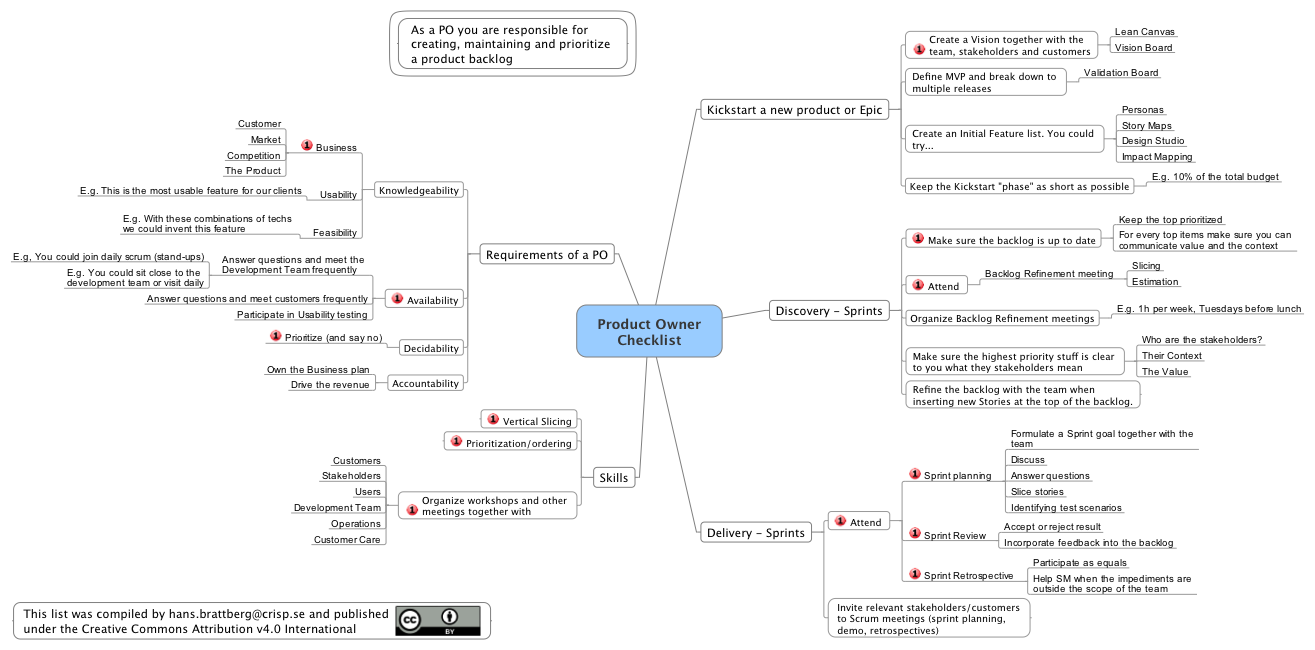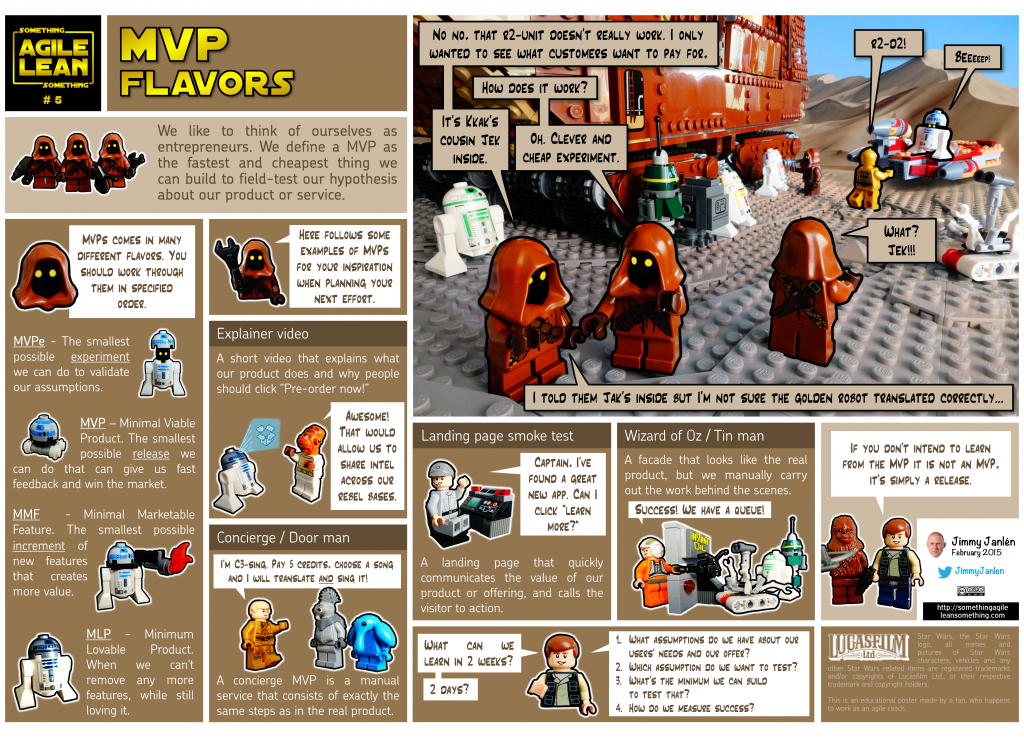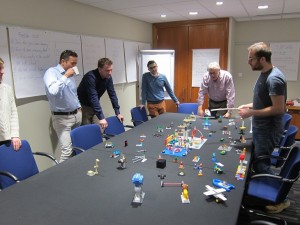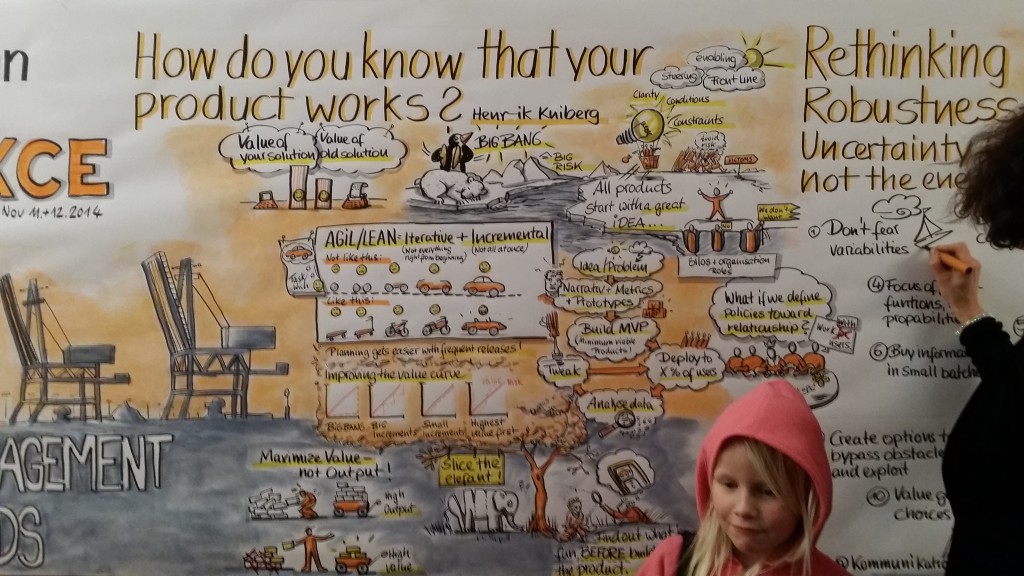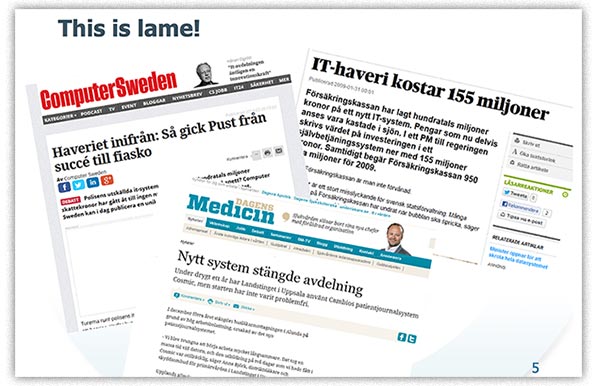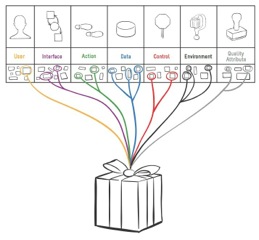 The key to product success is to discover and deliver the right product for the right customers—and to do it at the right time. That doesn’t change when you move to an agile way of working. In fact, appropriately applying the agile mindset amplifies the imperative of eliciting and specifying the right requirements. The goal is to deliver the highest value product needs (requirements) in as short a time as possible.
The key to product success is to discover and deliver the right product for the right customers—and to do it at the right time. That doesn’t change when you move to an agile way of working. In fact, appropriately applying the agile mindset amplifies the imperative of eliciting and specifying the right requirements. The goal is to deliver the highest value product needs (requirements) in as short a time as possible.
Continue reading
Lean Startup
Du har en idé om en tjänst.
Hur kan du snabbast och enklast verifiera att någon vill använda den?
Det är vad Lean Start-up handlar om.
A Scrum Product Owner Checklist as a mind map
If you wonder what a Scrum Product Owner need to do, here’s the checklist (in form of a mind map) for you!
Something Agile Lean Something – Posters on agile and lean concepts and techniques
A couple of weeks ago I started a new hobby. I’ve found a way to combine teaching agile and lean with creativity, art, Lego and Star Wars. Now I love spending time slowly putting Lego blocks together to create scenes. One by one. Very meditative and creative 🙂 The scenes I build I then use
Continue readingLearning Lego Serious Play
Three months ago I stumbled upon a question which needed an anwer: Could Lego be used for business strategy development? I just had to go to London to find out the answer.
With a group of 12 I spent the full weekend.. building Lego! When was the last time I did that? (hint: some 30 years ago..). The real interesting part is of course the stories we tell about the models. Each time we do, the team moves closer towards a shared understanding and also generate new insights. That’s cool!
Below: Team members walking through our shared model.
Guest blog by Anders Ramsay – Finding Agile UX Nirvana with the One-Feature Release
This is a guest post from veteran Agile UX coach Anders Ramsay who’ll be visiting Crisp in March.
In a traditional UX practice, there tends to be a strong focus on whole product design. In other words, we want to integrate all the features of a product into a unified and coherent experience, before we can consider the design work to be done.
Big Design Up-Front is like growing a tree in a “wireframe nursery” before planting it in the real world of working software.
But if you are taking this approach in designing the user experience, and you’re also part of an Agile team, then that might be a major reason why you’re struggling to integrate your UX practice into an Agile model.Continue reading
How do you know that your product works? Slides from my LKCE14 keynote.
Here are the slides for my keynote How do you know that your product works at Lean Kanban Central Europe, Hamburg.
I travelled with Emma (6 yrs), she’s been wanting to travel with me (alone, without her 3 siblings…) for a long time, so she’s really happy! Thanks Mary & Tom Poppendieck for being her bonus grandparents during the whole trip 🙂
Some sample slides & pics below.
Agila kontrakt – slides från Devlin 2014 (swe)
Här är mina slides om Agila kontrakt från Devlin 2014. Jag hoppas det skall inspirera fler företag och myndigheter att börja använda sig av dem, då de medför väsentligt lägre risk än traditionella kontrakt. (Använder du Agila kontrakt idag – tveka inte att höra av dig!) Vi har i Sverige dåliga practicies för upphandlingar och
Continue readingGetting High on Your Own Supply
Back in undergraduate school I had an artsy roommate who quickly dropped any intention of attending classes. Soon thereafter he picked up a line cook job at the local diner and took on a nocturnal lifestyle. That lifestyle led to a whole new set of friends who quickly helped him develop a recreational drug habit. To support his new found hobby, my roommate began dealing to his new found comrades and their acquaintances. The temptation of having all of that product around him turned out to be too much though and, soon enough, he was consuming more than he was selling leaving him increasingly in debt to his suppliers. This culminated in a day I’ll never forget. I had to take him to the pawn shop so he could trade his car (his last possession) for cash to get out of that debt. We rode home on the back of my motorcycle (which became our only means of transportation for the duration of our cohabitation).Continue reading
Video – product development without the product owner
Crisp’s Youtube channel has made a new release – introducing Concepts. Concepts is used to let passionate people run with ideas, a different approach than that of traditional product ownership. If you do use in conjunction with a product owner, it allows that person to spend more time on the field with customers. Ps: The
Continue readingVad du inte visste om LOU – Lagen om offentlig upphandling
(this post will be in Swedish since it is a response to Swedish legislation describing how to sell and buy software. If you still are interested, Google Translate is your best friend 🙂
LOU – Lagen om offentlig upphandling är fröet till många katastrofer för statliga och kommunala mjukvaruprojekt. Tänkt som ett verktyg för att hushålla väl med statliga medel, genom att konkurrensutsätta erbjudanden bidrar LOU tyvärr till att skapa dåliga förutsättningar för att lyckas med mjukvara.
Det knasiga med LOU är de felaktiga incitamenten: Om vi antar att de funktioner som är användbara är relativt okända i ett tidigt stadium av projektet så är default practice vid användandet av LOU att funktionerna skall specas i början och sedan skall billigast leverantör väljas. Det vanligaste sättet att jämföra leverantörer är att skapa en lång lista av den sammanlagda funktionaliten i deras produkter och sedan låta dem bjuda på minsta kostnad. Inte oväntat kommer vinnande leverantör efter kontraktet’s inskrivande att snabbt flytta på senior kompetens ur projektet till fördel för junior och vips befinner både kunden och leverantören i en långsam dödsdans där kundens användare blir förlorarna.
LOU innehåller dock ett antal möjligheter som du som upphandlare kan nyttja smart.
Guest post by Ellen Gottesdiener: Exploring Product Options to Arrive at Right Requirements
When is a so-called requirement really required? And is it the “right” requirement? The answers depend on many facets: stakeholders, value, planning horizon, and so on. This article explores using options as a means to identify high-value requirements, at the last responsible moment.
My Requirement May Be Your Option
Product requirements are needs that must be satisfied to achieve a goal, solve a problem, or take advantage of an opportunity. The word “requirement” literally means something that is absolutely, positively, without question, necessary. Product requirements must be defined in sufficient detail for planning and development. But before going to that effort and expense, are you sure they are not only must-haves but also the right and relevant requirements?
Continue reading
Slicing cheatsheet
One of the key challenges for any organization moving to a Lean flow is learning to slice bigger things to small. If you practice this long enough this becomes second nature and you stop thinking about how you do it. The good news is this skill can be taught and to show the dimensions available
Continue readingFörbättra från start till mål
I denna video berättar jag om vikten av att se till end-to-end ledtid och att den största förbättringspotentialen hos en organisation med Agila team ofta ligger i stegen innan utveckling påbörjas. (for english readers: In this video I tell about the importance of improving end-to-end lead time – not only think about the development portion
Continue readingGuest post by Ellen Gottesdiener: Strenghten Your Discovery Muscle
Here comes a new post from Ellen Gottesdiener who comes to Stockholm to hold her highly appreciated course Agile Requirements Analysis and Planning for Product Success.
In a recent interview in the New York Times, Panera Bread co-CEO Ronald M. Shaich talks about the importance of developing an organization’s “discovery muscle” as well as its “delivery muscle.” Most companies have worked hard to perfect delivery—how they get work done—he says, because delivery “feels rational, people feel much safer with it, and you can analyze it.” But discovery—the activities you undertake to define or change your product, service, or market—is about “leaps of faith. It’s about trusting yourself. It’s about innovation.” The key, Shaich says, is for the discovery muscle to be at least as strong as the delivery muscle.
He took the words right out of our mouths. This need for balance between discovery and delivery applies in spades to software development. Our new book, Discover to Deliver: Agile Product Planning and Analysis, explicitly makes the case for equally balancing your commitment to these key activities. We define the relationship between them: In lean/agile software development, discovery and delivery are interwoven, interdependent, continuous activities (see figure 1). Each feeds the other.
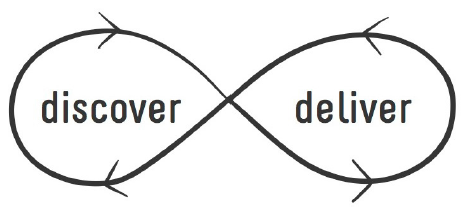
Guest blog by Ellen Gottesdiener: It’s the Goal, Not the Role:The Value of Business Analysis in Scrum
Ellen Gottesdiener is an internationally recognized leader in the collaborative space where agile requirements + product + project management converge. She coaches, trains, and presents to thousands of people globally and has facilitated hundreds of discovery and planning workshops across diverse industries.
She will hold her popular workshop in Stockholm 25-27 September 2013.
It’s the Goal, Not the Role:The Value of Business Analysis in Scrum
In agile development, what happens to the traditional business analyst? Consider Scrum, currently the most popular agile method. In Scrum, there is no “business analyst” role. In fact, there is not an explicit role for tester, project manager, architect, developer, data administrator, user experience designer, customer support representative, or product trainer. Instead, Scrum has three roles: the product owner, the Scrum Master, and the delivery team. Their collective goal is to deliver high‐valued product needs continually. So, where and how can a business analyst contribute?
Insights from Innovation games with Luke Hohmann
I got the chance to meet Luke, the founder of innovation games this week. I find his view refreshing – humans are basically creative. We need to provide the platform for ideas to emerge. Some of my reflections after listening to the stories: It’s serious play, these games shape the outcome of of real products
Continue readingSlides from SDC2012 – Modern product development principles
Just finished my session at SDC 2012 where I’m arguing for less hierarchy and economically aligned decision rules that enables local teams to do tradeoffs. Mary Poppendieck commented it as “traditional product management”. Maybe that’s where we are heading 🙂 Anyway, here are the slides
Continue reading